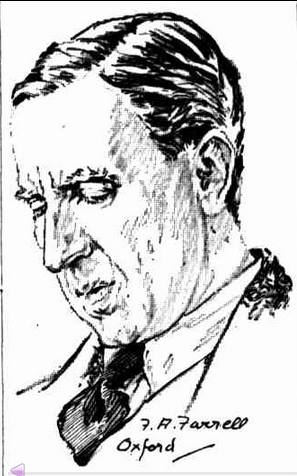The Tolkien Society’s Oxonmoot is the world’s longest-running annual event dedicated to Tolkien. Taking place in an Oxford college over a long weekend close to Frodo and Bilbo’s birthday in September, it is rightly considered one of the most important events for lovers of Tolkien and his works.
Here are just 10 reasons why you should come to this year’s Oxonmoot, which takes place at St Antony’s College from 10th to 13th September 2015. And don’t forget to book your place right now! (more…)
I have always been fascinated with Cerin Amroth, the tree-capped hill in Lothlorien where Haldir removed the blind-folds from the Fellowship. He led Frodo up to the high flet that (presumably) marked where Amroth had once lived. Tolkien’s description of the hill, topped with two circles of trees, always struck me as being modeled on a real place but I have never come across any attempts to identify such a place.
Maybe it is because there are (or were) several likely places in England that could have served as models for Cerin Amroth. Just spending a little bit of time searching the Web for circles of trees in England I found several references, of which Chanctonbury Ring near Worthing and Brighton seems to me very similar to Cerin Amroth. (more…)
July 2015
Issue no. sixty …
This should, of course, have been the fifth anniversary issue, but due to my three-month hiatus last year, the fifth anniversary was actually well-past before I discovered it.
I have – well, more or less 😉 – taken this month off from Scouting, which can probably be seen in the timeliness of publishing this, and in the thoroughness of this issue. I am afraid you shouldn’t expect this state to last.
All the usual disclaimers apply about newness, completeness and relevance (or any other implication of responsibility) 🙂
Professor Tolkien, until the end of the 20th century, was not recognized (or even known) as a great writer in Brazil. His works were generally read by people who had a good routine of reading and among youngsters who used to play RPG.

In The Advocate of 9 August 1934 a head and shoulder portrait of an academic (right) was published with the accompanying text: “Professor John Tolkien has been Rawlinson and Bosworth Professor of Anglo-Saxon in Oxford University since 1925. He served with the Lancashire Fusiliers from 1915-18. Born of a South African family in 1892, he was educated at the King Edward VI. School, Birmingham, and Exeter College, Oxford. He was Professor of English Language in Leeds University in 1924-5.” This sketch does not appear to have been published for over seventy years until it resurfaced earlier this week. The use of John rather than Ronald suggests that Tolkien was probably not actually consulted about the text.
‘New’ drawings of Tolkien are not unearthed every day, especially from the period before the publication of The Hobbit in 1937, so this image of the author dating from 1934 is particularly interesting. What was Tolkien doing in 1934? He had probably fairly recently completed the first version of The Hobbit. He was a busy academic, lecturing and teaching on a daily basis, and was also working on several academic publishing projects. The poems ‘The Adventures of Tom Bombadil’ and ‘Looney’ had also been published for the first time earlier that year. It is interesting that although he had not published any fiction at this point, he was considered of sufficient international significance as a Catholic to be featured in an antipodean religious publication.
There are no hieroglyphs or bas-reliefs in J.R.R. Tolkien’s Middle-earth. That’s a curious omission from a pseudo-historical narrative of the ancient world, don’t you think? And when it comes to statues the Elves do trees and the Gondorians do kings, but how many real examples of statues can you find in The Lord of the Rings? Nonetheless, there is little to no evidence of actual writing carved in stone. I can think of Balin’s tombstone, but everything else is just an ambiguously “carven pillar”. (more…)